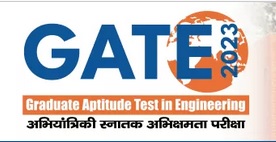GATE Electronics And Communications Engineering (EC) Syllabus 2023
Organisation : Graduate Aptitude Test In Engineering GATE
Exam Name : Electronics And Communications Engineering (EC) Exam
Announcement : GATE Electronics And Communications Engineering (EC) Syllabus 2023
Website : https://gate.iitk.ac.in
GATE Electronics And Communications Engineering (EC) Syllabus
In each of the following subjects the topics have been divided into two categories – Core Topics and Special Topics. The corresponding sections of the question paper will contain 90% of their questions on Core Topics and the remaining 10% on Special Topics.
Related / Similar Syllabus : GATE Computer Science & Information Technology (CS) Syllabus 2023

Electronics And Communications Engineering (EC) Syllabus
Section 1: Engineering Mathematics
Linear Algebra:
Vector space, basis, linear dependence and independence, matrix algebra, Eigen values and eigen vectors, rank, solution of linear equations- existence and uniqueness. Calculus: Mean value theorems, theorems of integral calculus, evaluation of definite and improper integrals, partial derivatives, maxima and minima, multiple integrals, line, surface and volume integrals, Taylor series.
Differential Equations:
First order equations (linear and nonlinear), higher order linear differential equations, Cauchy’s and Euler’s equations, methods of solution using variation of parameters, complementary function and particular integral, partial differential equations, variable separable method, initial and boundary value problems.
Vector Analysis:
Vectors in plane and space, vector operations, gradient, divergence and curl, Gauss’s, Green’s and Stokes’ theorems.
Complex Analysis:
Analytic functions, Cauchy’s integral theorem, Cauchy’s integral formula, sequences, series, convergence tests, Taylor and Laurent series, residue theorem.
Probability and Statistics:
Mean, median, mode, standard deviation, combinatorial probability, probability distributions, binomial distribution, Poisson distribution, exponential distribution, normal distribution, joint and conditional probability.
Section 2: Networks, Signals and Systems
Circuit Analysis: Node and mesh analysis, superposition, Thevenin’s theorem, Norton’s theorem, reciprocity. Sinusoidal steady state analysis: phasors, complex power, maximum power transfer. Time and frequency domain analysis of linear circuits: RL, RC and RLC circuits, solution of network equations using Laplace transform. Linear 2-port network parameters, wye-delta transformation.
Continuous-time Signals: Fourier series and Fourier transform, sampling theorem and applications. Discrete-time Signals: DTFT, DFT, z-transform, discrete-time processing of continuous-time signals. LTI systems: definition and properties, causality, stability, impulse response, convolution, poles and zeroes, frequency response, group delay, phase delay.
Section 3: Electronic Devices
Energy bands in intrinsic and extrinsic semiconductors, equilibrium carrier concentration, direct and indirect band-gap semiconductors. Carrier Transport: diffusion current, drift current, mobility and resistivity, generation and recombination of carriers, Poisson and continuity equations. P-N junction, Zener diode, BJT, MOS capacitor, MOSFET, LED, photo diode and solar cell.
Section 4: Analog Circuits
Diode Circuits: clipping, clamping and rectifiers. BJT and MOSFET Amplifiers: biasing, ac coupling, small signal analysis, frequency response. Current mirrors and differential amplifiers. Op-amp Circuits: Amplifiers, summers, differentiators, integrators, active filters, Schmitt triggers and oscillators.
Section 5: Digital Circuits
Number Representations: binary, integer and floating-point- numbers. Combinatorial circuits: Boolean algebra, minimization of functions using Boolean identities and Karnaugh map, logic gates and their static CMOS implementations, arithmetic circuits, code converters, multiplexers, decoders.Sequential Circuits: latches and flip-flops, counters, shift-registers, finite state machines, propagation delay, setup and hold time, critical path delay. Data Converters – sample and hold circuits, ADCs and DACs. Semiconductor Memories – ROM, SRAM, DRAM. Computer Organization – Machine instructions and addressing modes, ALU, data-path and control unit, instruction pipelining

Download GATE Electronics And Communications Engineering (EC) Syllabus
Download Full GATE Electronics And Communications Engineering (EC) Syllabus Here :
http://www.syllabus.gen.in/uploads/pdf2022/3052.pdf